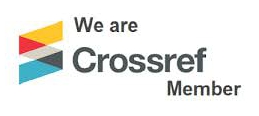The Effect of Blade Height and Inlet Height in a Straight-Blade Undershot Waterwheel Turbine by Computational Method
Keywords:
undershot, waterwheel, computational, blade, 6-DoFAbstract
The potential of renewable energy in Indonesia is very high, especially for hydropower: 75 GW can be obtained from a large scale, and 19 GW from a mini, micro and pico scale. However, in 2018, there were 5 million people in Indonesia lacking access to electricity. A pico hydro-type undershot waterwheel is one suitable solution to this problem. The undershot waterwheel was chosen for this study because its design, operation, maintenance and installation is believed to be simpler than other types of turbines. Although this turbine technology is quite dated compared to other types, there has been no particular discussion about the effect of blade height (?) and inlet height (L) on the power produced. This study therefore investigates the influence of ? and L on power production by using CFD tools. This study uses six degrees of freedom (6-DoF) for the transient approach, and the standard k ? ? turbulent model to predict turbulent flow. Based on the results, the h/L ratio has an influence on the performance of undershot waterwheel. An h/L ratio of 1 produces greater power than ratios of 0.5, 0.75 or 1.5. The resulting efficiency with an h/L ratio of 1 is 31.52 %, while with 0.5 it is 22.75 %, with 0.75 it is 29.44 % and with 1.5 it is 26.55 %. Thus, an h/L ratio of 1 is recommended for designing undershot waterwheel turbines.












